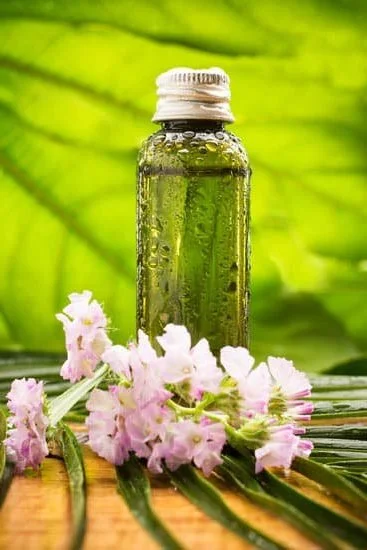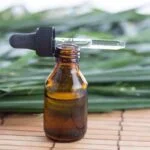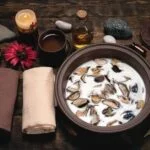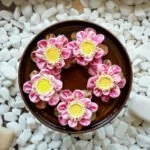Are you ready to test your knowledge of aromatherapy principles and practices? In the 2nd edition of A Handbook for Aromatherapy Practice, quizzes have been included to aid in the learning process. Quizzes are an essential component of the new edition, providing an interactive way for readers to engage with the material and solidify their understanding of key concepts.
The types of quizzes included in the 2nd edition range from multiple-choice and true/false questions to short answer assessments. These quizzes are tailored to help readers assess their grasp of aromatherapy principles and identify areas that may require further review. By incorporating various quiz formats, the handbook offers a comprehensive approach to reinforcing learning and retention.
By delving into the educational benefits of quizzes, readers can gain insights into how these interactive assessments help in reinforcing key concepts, identifying areas for improvement, and gauging their understanding of aromatherapy principles. The inclusion of quizzes in the 2nd edition serves to provide a holistic approach to learning, ensuring that readers can effectively apply their knowledge in real-world scenarios beyond just memorization.
What to Expect
The 2nd edition of A Handbook for Aromatherapy Practice includes a variety of quizzes to enhance the learning experience for readers. These quizzes come in different formats, including multiple-choice, true/false, and short answer questions, providing a well-rounded approach to assessing comprehension of aromatherapy principles. The inclusion of these different types of quizzes offers readers the opportunity to engage with the material in diverse ways, catering to various learning styles and preferences.
Multiple-choice quizzes challenge readers to critically think about the information presented in the handbook and choose the most appropriate answer from a list of options. True/false questions test readers’ ability to discern between accurate and inaccurate statements related to aromatherapy concepts. Short answer questions require respondents to demonstrate their understanding by articulating detailed responses, encouraging deeper reflection on the material.
In addition to the types of quiz questions included in this edition, it’s important to note how they are structured. The quizzes are strategically placed throughout the handbook, allowing readers to review and assess their knowledge as they progress through each section.
This structure provides an integrated approach that reinforces key concepts and encourages active participation in the learning process. By detailing these elements, readers gain a clear understanding of what to expect when engaging with the quizzes in the 2nd edition of A Handbook for Aromatherapy Practice.
| Types of Quizzes | Structure |
|---|---|
| Multiple-Choice | Strategically placed throughout the handbook |
| True/False | Encourages active participation in learning process |
| Short Answer | Demonstrates understanding through detailed responses |
Benefits of Quizzes
The benefits of quizzes in the 2nd edition of A Handbook for Aromatherapy Practice are numerous and contribute significantly to the learning experience for readers. Quizzes serve as an effective tool for reinforcing key concepts covered in the handbook, allowing individuals to test their understanding and retention of aromatherapy principles. By engaging with quiz questions, readers can apply what they have learned and solidify their knowledge through active recall, helping to cement essential information in their long-term memory.
Moreover, quizzes also play a crucial role in identifying areas for improvement. Through the process of taking quizzes, readers can pinpoint specific topics or concepts that may require further review and reinforcement. This allows individuals to focus their efforts on areas where they may be struggling or where additional study is needed, ultimately enhancing their overall comprehension of aromatherapy practices.
Additionally, the act of taking quizzes helps to gauge the reader’s understanding of aromatherapy principles. By assessing their performance on quiz questions, individuals can gain insight into how well they have grasped the material presented in the handbook. This self-assessment aspect of quizzes is invaluable in providing readers with a clear indicator of their comprehension level and can guide them in determining areas where they need to devote more attention and study time.
| Benefits | Educational Impact |
|---|---|
| Reinforcing key concepts | Enhances understanding and retention |
| Identifying areas for improvement | Allows focus on specific topics |
| Gauging understanding of principles | Provides self-assessment and guidance |
Preparation Tips
In order to effectively prepare for the quizzes included in the 2nd edition of A Handbook for Aromatherapy Practice, it is essential for readers to establish a comprehensive study plan. Below are some preparation tips and strategies that will help readers maximize their learning experience:
- Familiarize yourself with the structure of the quizzes: Understand the types of questions that will be included in the quizzes, such as multiple-choice, true/false, and short answer questions. This will allow you to tailor your studying approach accordingly.
- Create a study schedule: Allocate specific times during your week dedicated to reviewing the handbook and other aromatherapy resources. Consistency is key in retaining information and preparing effectively for the quizzes.
- Utilize recommended study materials: Take advantage of any suggested supplementary materials, such as online resources, articles, or videos that can provide additional insight into aromatherapy principles.
- Use active learning techniques: Engage with the material actively by taking notes, creating flashcards, or explaining concepts to others. These methods can enhance comprehension and retention.
By following these preparation tips and strategies, readers can approach the quizzes with confidence and bolster their understanding of aromatherapy principles. Additionally, adopting these practices will not only aid in quiz preparation but also contribute to a deeper grasp of essential concepts in aromatherapy.
Quiz Sample Questions
The 2nd edition of A Handbook for Aromatherapy Practice includes a variety of quizzes to help readers assess their understanding of the principles and practices of aromatherapy. These quizzes are designed to test knowledge on a range of topics, from essential oils and their therapeutic uses to blending techniques and safety precautions. By sharing a selection of sample quiz questions, readers can gain insight into the types of questions they can expect and the level of difficulty involved.
Sample Quiz Question 1: Essential Oils
Which essential oil is commonly used for its calming properties and can help promote relaxation and sleep?
Sample Quiz Question 2: Blending Techniques
What is the recommended dilution ratio for blending essential oils with carrier oils for topical application on adults?
- a) 1% – 2%
- b) 5% – 10%
- c) 15% – 20%
- d) 25% – 30%
Sample Quiz Question 3: Safety Precautions
Which essential oil should be avoided during pregnancy due to its potential to stimulate uterine contractions?
These sample quiz questions reflect the diverse topics covered in the handbook and demonstrate the level of detail and critical thinking required to successfully complete the quizzes in the 2nd edition. They provide a glimpse into the depth of knowledge that readers are expected to have in order to effectively practice aromatherapy.
Readers are encouraged to use these sample questions as a starting point for their quiz preparations, engaging with the material in-depth to ensure a comprehensive understanding of aromatherapy principles. The answers and explanations provided will not only reveal correct responses but also offer insight into the reasoning behind each answer, supporting readers in furthering their knowledge base.
Quiz Answer Key
The Quiz Answer Key section of the 2nd edition of A Handbook for Aromatherapy Practice provides readers with the answers to the sample questions included in the book’s quizzes. This section aims to offer a comprehensive understanding of the correct responses, allowing readers to gain insight into the underlying reasoning for each answer. By exploring the rationale behind the correct responses, readers can deepen their understanding of aromatherapy principles and enhance their overall knowledge retention.
In this section, you can expect to find detailed explanations for each correct answer to the sample quiz questions. The purpose is not only to provide the solutions but also to demonstrate the application of key concepts and principles in aromatherapy practice. Additionally, readers will have access to insights into why specific choices are accurate, further reinforcing their comprehension of essential information presented in the handbook.
Some benefits include:
- Gain insight into reasoning: Understanding why a particular answer is correct can help solidify knowledge and improve long-term retention.
- Expand critical thinking skills: Exploring the rationale behind each response encourages analytical thinking and problem-solving abilities.
- Enhance learning experience: The quiz answer key section offers a valuable resource for readers seeking to reinforce their understanding of aromatherapy principles and concepts.
By delving into this section, readers can unlock a deeper level of comprehension regarding aromatherapy practices and principles, ultimately leading to a more thorough grasp of essential information for their professional and personal endeavors in this field.
How Quizzes Enhance Learning
Taking quizzes is not only a way to assess one’s understanding of the material, but it also plays a significant role in enhancing long-term knowledge retention. In the context of A Handbook for Aromatherapy Practice 2nd Edition, quizzes serve as valuable tools for reinforcing key concepts and principles, ultimately contributing to a deeper understanding of aromatherapy.
By exploring the connection between taking quizzes and long-term knowledge retention, readers can gain insight into the educational benefits provided by the quizzes in the 2nd edition.
Evidence-Based Learning
Quizzes are grounded in evidence-based learning theories that have shown their effectiveness in aiding memory recall and comprehension. The act of retrieving information during a quiz prompts the brain to engage with the material actively, strengthening neural pathways associated with that knowledge. This process not only reinforces learning but also contributes to enhanced long-term retention of aromatherapy concepts and practices.
Application of Knowledge
Additionally, taking quizzes allows readers to apply their knowledge in practical scenarios, which is essential for developing a deeper understanding of aromatherapy. By tackling questions that present real-life case studies or examples, individuals can assess their ability to translate theoretical principles into actionable strategies. This application-based approach to learning fosters a more comprehensive grasp of aromatherapy practices and their potential outcomes.
Identification of Knowledge Gaps
Moreover, quizzes aid in identifying areas for improvement and further study. When individuals receive feedback on their quiz performance, they can pinpoint specific areas where their understanding may be lacking or incomplete. This targeted awareness of knowledge gaps enables readers to focus their efforts on specific topics that require additional attention, thereby facilitating a more thorough comprehension of aromatherapy principles as presented in the 2nd edition handbook.
Quiz Resources
In conclusion, the 2nd edition of A Handbook for Aromatherapy Practice has incorporated quizzes as a valuable tool for enhancing learning and retention. By including various types of quizzes such as multiple-choice, true/false, and short answer questions, readers are able to engage with the material in different ways, reinforcing key concepts and identifying areas for improvement.
The benefits of quizzes in this edition extend beyond just testing knowledge; they also serve as a means to gauge understanding of aromatherapy principles and contribute to long-term knowledge retention.
For those preparing to take the quizzes in the 2nd edition, it is important to utilize effective study strategies and resources. The handbook provides preparation tips including recommended study materials and best practices for reviewing the content.
Additionally, readers can take advantage of the quiz sample questions provided in the book to get a sense of the topics and level of difficulty covered. Furthermore, the availability of online practice quizzes and study guides offers additional resources for readers to further test their knowledge.
Overall, the inclusion of quizzes in the 2nd edition not only serves as an assessment tool but also as a means to enhance the learning experience. By engaging with the material through quizzes, readers are able to solidify their understanding of aromatherapy principles and ultimately benefit from improved retention of key concepts. As such, these quizzes play a crucial role in amplifying the educational value of A Handbook for Aromatherapy Practice 2nd Edition.
Frequently Asked Questions
How Old Is the Practice of Aromatherapy?
The practice of aromatherapy dates back to ancient civilizations such as the Egyptians, Greeks, and Romans who used essential oils for various medicinal and therapeutic purposes. Its origins can be traced back thousands of years, making it a centuries-old practice that continues to be used today.
How Often Should You Practice Aromatherapy?
The frequency with which one should practice aromatherapy can vary depending on individual needs and preferences. Some people may find benefits from using essential oils daily as part of their self-care routine, while others may choose to use them on an as-needed basis for specific issues or conditions.
It’s important to listen to your body and adjust the frequency based on how you feel.
Do You Have to Be Able to Smell for Aromatherapy to Work?
While the sense of smell is an important aspect of experiencing the benefits of aromatherapy, it is not necessarily a requirement for it to work. Essential oils can also be absorbed through the skin or ingested (with caution and under the guidance of a qualified professional), providing potential benefits even for those who may have olfactory impairments.
Additionally, some research suggests that simply inhaling essential oils without a discernible scent can still have an impact on mood and emotions through other sensory pathways in the body.

Are you looking for a natural way to improve your health and wellbeing?
If so, aromatherapy may be the answer for you.





